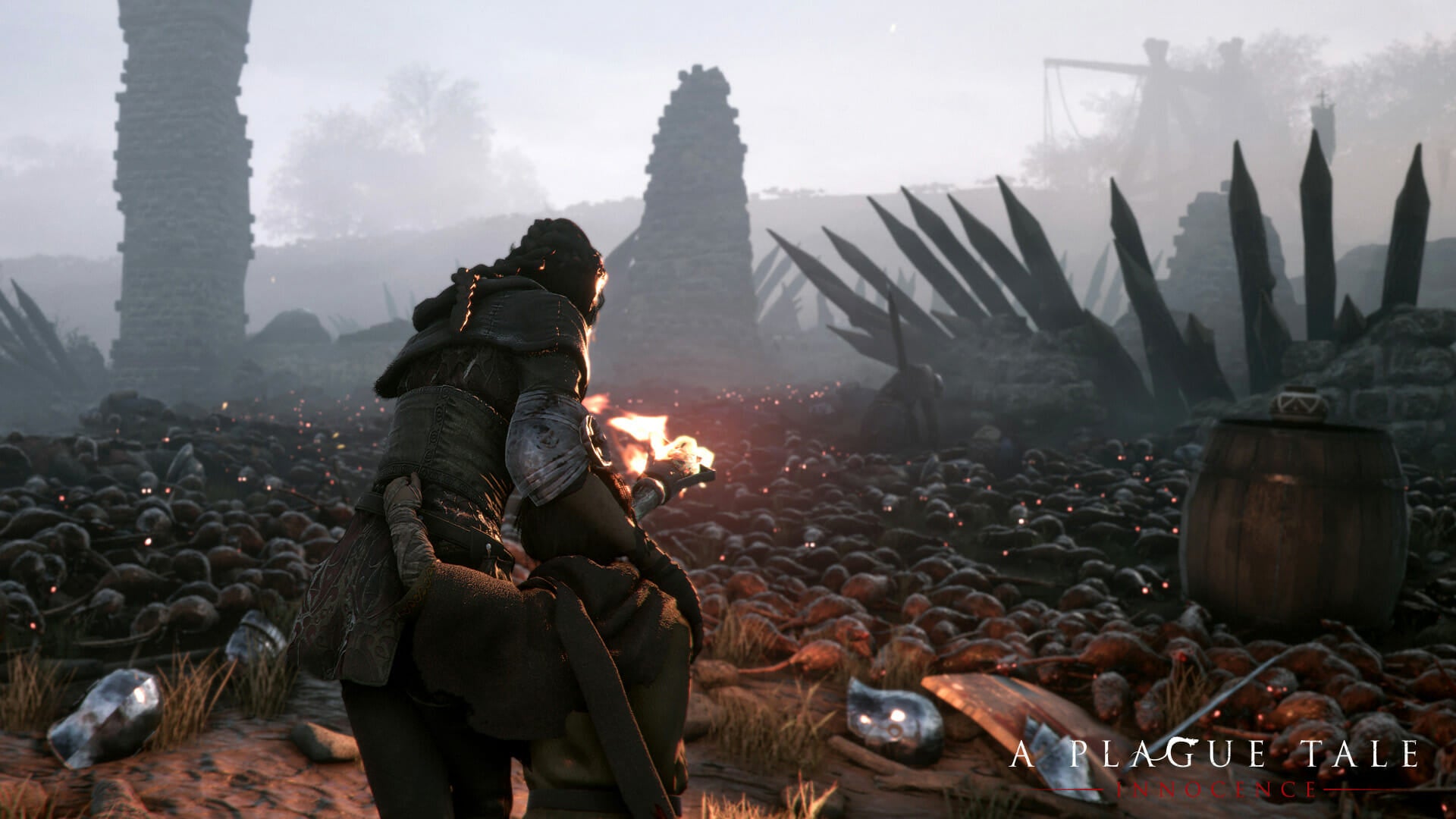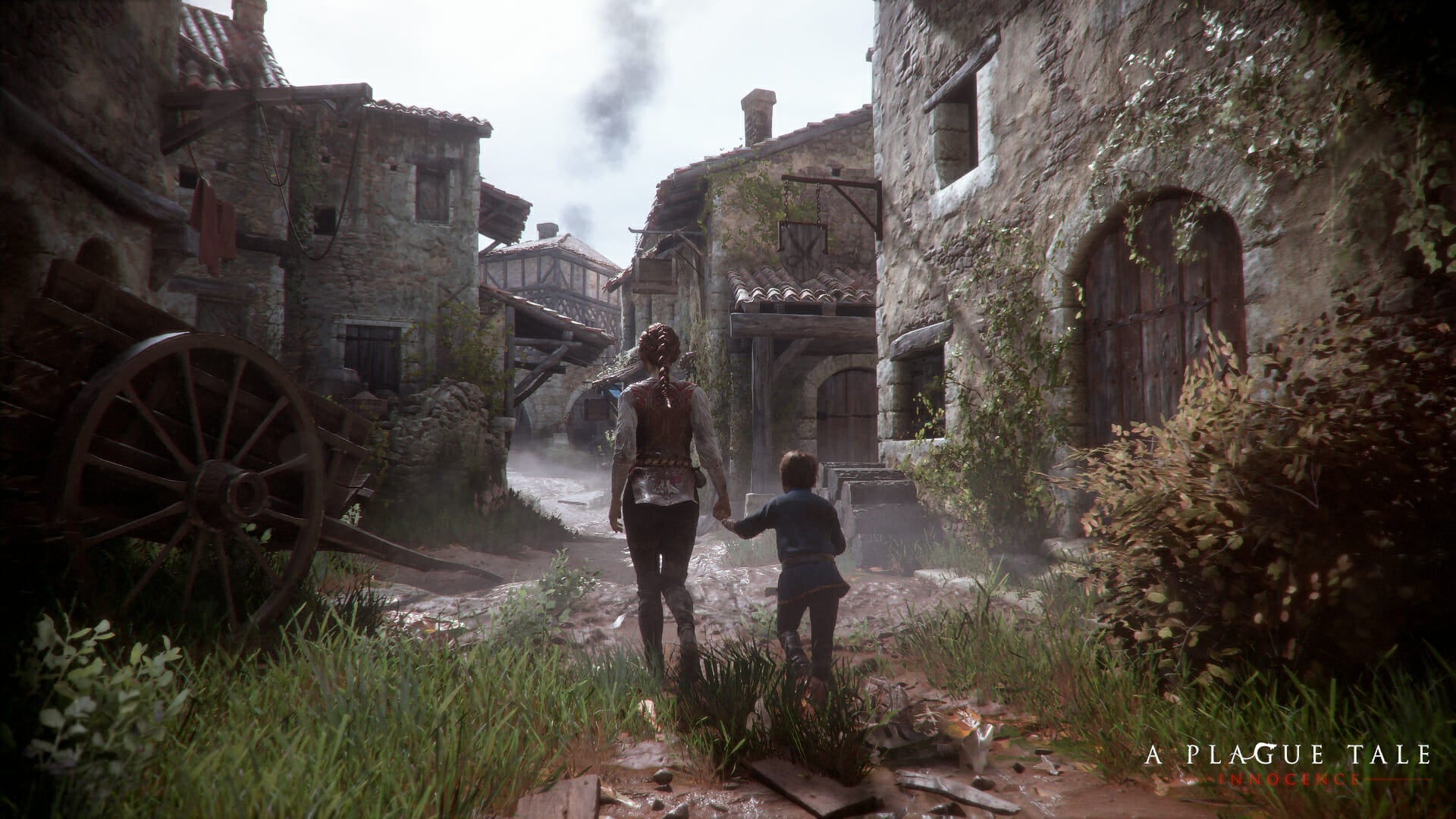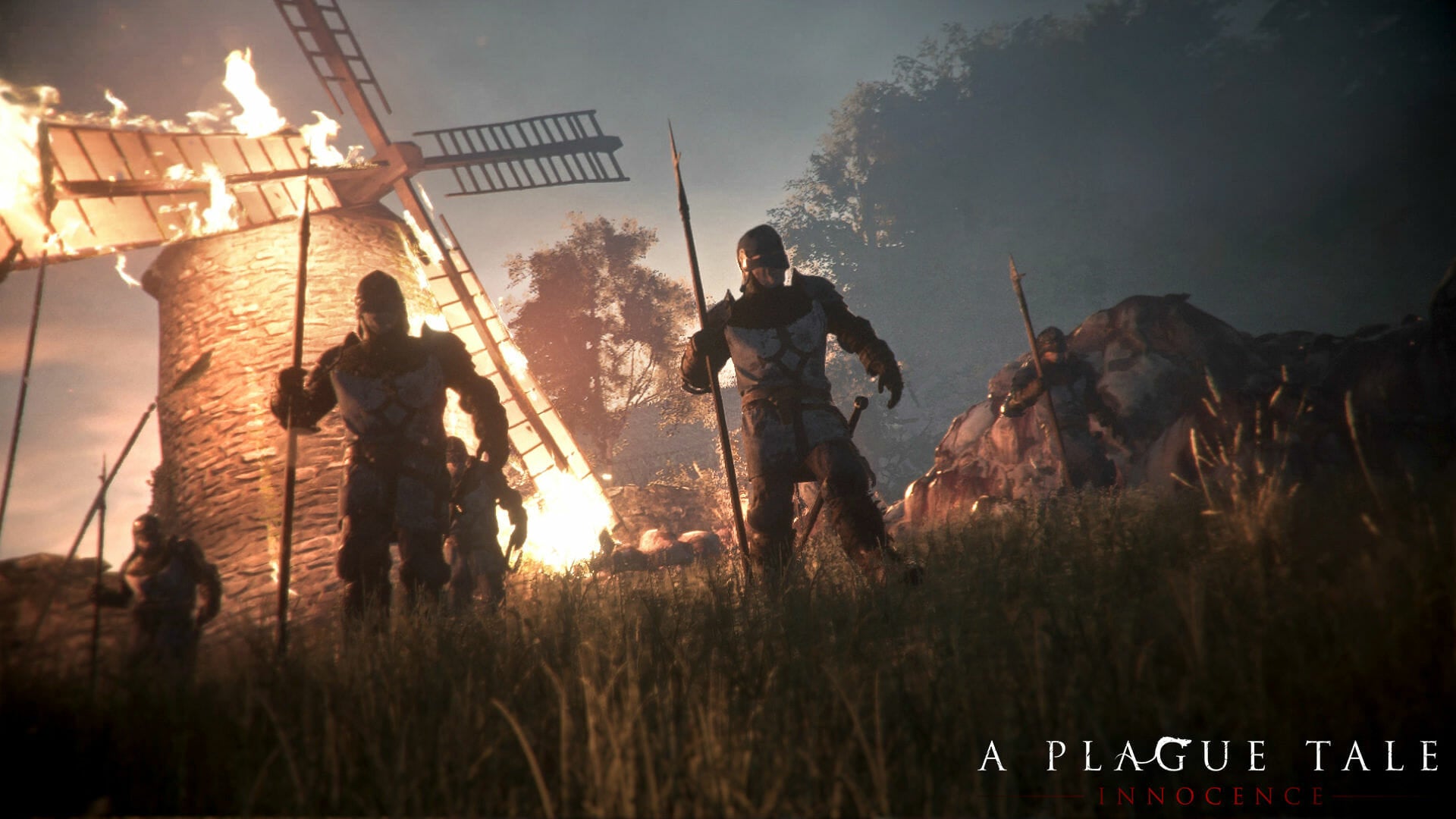For a publisher that seems to spend most of its time constructing shadowy vampire adventures and grimdark Warhammer universes, it says something that A Plague Tale: Innocence is perhaps Focus Home’s finest love letter to French gothic horror. Like many a love letter though, it goes on too long and perhaps relies on its favorite tricks too often. Though many of its arcs begin and end at the teeth of unnaturally large swarms of rats and corrupt Inquisition soldiers, there’s a beauty here that’s both visual and visceral enough to make you care enough about what happens to the blighted young boys and girls of its world.
Where better to kick off this adventure than a grim reimagining of Focus Home and developer Asobo Studio’s homeland, 14th century France. Conveniently enough, it’s also the origin point of the Black Death plague and the Hundred Years’ War that tore the French countryside apart and resulted in the deaths of millions. Plague Tale decides to focus on the older sister and younger brother duo of Amicia and Hugo de Rune. Amicia on occasion feels like a Black Plague version of a Disney princess: A lover of animals, good with a sling, and able to keep her hair perfectly braided throughout chase sequences. Hugo is the baby brother archetype to a fault, including running off into the mouth of death despite his sister’s pleas. The two lead an idyllic life from their countryside villa stacked with servants, though their mother has kept Hugo apart from the rest of the family for vaguely defined reasons, which leads to plenty of awkward attempts at bonding early on. As is appropriate for such a tale, their relative peace and prosperity is interrupted by a murderous legion of Inquisition knights, along with a conveniently timed lake-sized swarm of plague-ridden rats, and the two children are thrown out into the world on their own to seek shelter and determine why their blood is so important to these murderers and monsters.
Though Plague Tale tries to shroud the involvement of the rats for the first couple of chapters, two minutes with any trailer will show you how much of a core threat they are. What I wasn’t expecting was just how much slow-burn storytelling Plague Tale would indulge in, including a small cast of characters, each with their own unique motivations, and a variety of environments that do their own hefty share of storytelling.

Like so many adventure games with a strong focus on narrative, Plague Tale only tends to suffer when its gameplay mechanics fail to complement its story. The first part of its core loop is simple exploration, and uniquely interesting environments manage to make the mere act of walking around feel engaging enough. I was completely set on Plague Tale being a budget-level experience that reused its assets to a fault, and while the game really never escapes its French gothic horror art style, I was shocked to find so many interesting variations on creepy tombs and castles and infested villages. Some of these are downright gorgeous, like the opening chapter’s countryside villa, replete with autumn trees. There’s a battlefield littered with the bodies of the dead under the watchful shadows of aqueducts and siege towers. There are cathedrals and castles so immense and gore-soaked that they would seem right at home in the dankest, darkest regions of the Warhammer universe.
And all along your way, you’ll see how the country’s growing rat infestation has reshaped it all. Villages are abandoned, their doors slapped with white X’s to signify that the infected dwell within; an abandoned picnic blanket by the river is strewn with blood and mountains—my god, the mountains—of corpses both human and animal alike. For a game that most surely couldn’t have had the budget of its AAA competitors, Plague Tale manages to consistently paint a portrait of dark ages misery and survival (without edging into silliness… mostly) unlike anything I’ve ever seen before.
That said, the acting can be a little stiff at times, and I occasionally ran into a bug that stopped characters from speaking, which meant restarting from previous (thankfully plentiful) checkpoints. On the bright side, that meant I cared enough to hear the dialogue between Amicia, Hugo, and the cast of young alchemists, thieves, and smiths they meet along the way. On a surface level, the story grows and resolves in a fairly satisfactory way, even if I’m still not sure what the hell the antagonist was gunning for. There’s a solid Game of Thrones vibe coursing throughout: Characters you may grow to like aren’t always shielded by plot armor, which keeps you on your toes.
And while the world you’re exploring is fascinating and memorable in its own haunting way, it’s a shame that your interactions with it are a bit stiff. As Amicia, it’s your job to make sure that Hugo gets through this hellscape alive, and thankfully Hugo doesn’t become the escort mission nightmare he so easily could have been. That said, sneaking around enemies and putting them in a position to eat or be eaten is often boringly linear.
The basic idea with Plague Tale is that you’re either sneaking around Inquisition knights patrolling in pre-determined routes, or you’re attempting to circumvent hordes of rats using the only thing they truly hate: Light.
The tech behind these rats is nothing short of stunning, and for the most part, really adds to the ominous atmosphere of disease and decay. Sometimes, especially when you’re using light fixtures to solve environmental puzzles, they’ll look a little goofy as a cluster of them clip through a wall or shudder unnaturally. Thankfully these moments aren’t terribly common, and more often than not, the rats provide this oppressive, anxiety-ridden, nibble-at-your-heels horror that’s just great. You know those games that loudly advertise how many enemies or zombies they can have on screen? Though these rats are certainly smaller in stature, they may be the most impressive version of that trope I’ve ever seen, and they generally earn it every step of the way.

The best moments with the rats are when Amicia and Hugo have to wade through seas of them with nothing but a rapidly dwindling torch to ward them off. The way they ebb and flow around the two is equal parts gross and terrifying, even more so when you’re bathed in darkness and have to wade through one of their grisly, fleshy nests. They’re a literal force of nature, rendering the environment around them to rubble and bursting up from the earth like geysers.
Though some scenarios offer a few options for getting through, more often than not you’re forced to utilize the one solution for clearing the way, which robs the game of any replayability and feels a bit forced. Using Amicia’s trusty rock sling, Plague Tale is great about drip-feeding you new projectiles to use to your advantage. A rock to the skull will take out unarmored guards, but for the ones wearing helmets, you’ll need to stick them with a poisonous projectile that forces them to panic. Others do simple stuff like lighting or extinguishing flames or drawing rats to specific points. Numerous environmental puzzles run the gamut from unique and a bit horrifying to dull—if only because you’re just slinging, slinging, and slinging some more.
At its worst, some poor scenario design hampers the human vs. human combat and stealth. There are a few somewhat open-ended areas that give you a couple of options for slinking through, but nothing on the scale of a legitimate stealth game like Metal Gear Solid or even Deus Ex. There are several sequences where you’re forced to eliminate short waves of enemies as they charge at you from a distance, and your sling is woefully inadequate at aiming at any enemy running in any direction but a straight line, resulting in a lot of frustrating one-hit deaths. There are two excellent sequences where you’re encouraged to whip the armor off of a single enemy in a small arena, accompanied by some genuinely interesting character beats that make your enemy feel like more than a faceless grunt. I wish there were more of that, but alas.

While exploration in Plague Tale is perfectly fun and varied (environments don’t ever really feel like they’re repeating assets, which is a blessing in a modestly budgeted title), collecting materials for your various sling projectiles is a drag. There’s a decent number of upgrades you can make to your sling and materials pouch, but it almost always felt like I was missing one ingredient to make what I wanted. On top of that, while you eventually gain about eight different kinds of sling projectiles, I rarely used more than half of them. I’m typically great at combing corners of an environment to maximize my skill tree, but Plague Tale prefers to keep things pretty barren.
At no point did I truly dislike Plague Tale. Quite the contrary. It almost never fails to give you something new to think about or look at, even if you tend to be doing the same three or four things while doing so. The art and environment design is on par with or exceeds some of 2019’s biggest budget titles, and while its core gameplay wears thin by the end, Plague Tale never seems to run out of unique scenarios to throw you into. I dare not spoil it, but the final boss battle will undoubtedly go down as one of 2019’s coolest sequences for the sheer lunacy of what you’re witnessing on screen. In the end, it’s doubtful that there’s more to mine from this world, but the developers sure squeezed every last bit of “cool” out of it, and that’s a feat worth admiring.
Rating: 4/5
A Plague Tale: Innocence was reviewed on PC using a code provided by the publisher. The game is available on May 14 on PS4, Xbox One, and PC.
